Linux文件的扩展属性 attr cap
文件属性
Linux文件属性分为常规属性与扩展属性,其中扩展属性有两种:attr与xattr.
一般常规的文件属性由stat API 读取,一般是三种权限,ower, group,时间等。
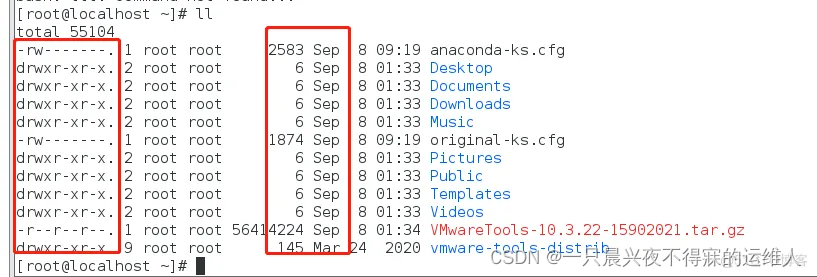
扩展属性attr
用户态API
ioctl(fd, FS_IOC32_SETFLAGS or FS_IOC_SETFLAGS,...)
使用ioctl中扩展的命令字
内核中的处理
ext2对应的FS_IOC32_SETFLAGS的函数
long ext2_ioctl(struct file *filp, unsigned int cmd, unsigned long arg)*/
struct ext2_inode_info {
__le32 ? ?i_data[15];
__u32 ? ?i_flags; //保存配置的位置在ext2自已的inode接口里的i_flags里。这些数据最后同步到文件系统的磁盘中。
__u32 ? ?i_faddr;
__u8 ? ?i_frag_no;
__u8 ? ?i_frag_size;
__u16 ? ?i_state;
__u32 ? ?i_file_acl;
__u32 ? ?i_dir_acl;
__u32 ? ?i_dtime;
命令
lsattr 与chattr
这两个命令的关键字是attr,不是xattr,但他们是文件的扩展属性的另一个基础版本
lsattr file.txt-----a---------- file.txt
[root@localhost ~]# chattr +i file.txt //为file.txt 增加i属性。不得任意更动文件或目录。
[root@localhost ~]# lsattr file.txt
----ia---------- file.txt
[root@localhost ~]#
扩展属性xattr
扩展属性是由Linux文件系统ext2(ext3)等为文件提供可配置扩展属性的空间。目前主要使用的是security.capability与security.selinux,用于可执行文件的能力控制和强制访问控制。
API
扩展属性有一组API,以xattr为关键字。
用户态API:
#include <sys/xattr.h>
ssize_t getxattr(const char *path, const char *name, ?void *value, size_t size); ? ? ??
ssize_t lgetxattr(const char *path, const char *name, void *value, size_t size); ? ? ??
ssize_t fgetxattr(int fd, const char *name,void *value, size_t size);内核对应的API入口:
见fs/xattr.c
sys_fsetxattr(int fd, char __user *name, void __user *value,size_t size, int flags);特定文件系统的支持ops
inode_operations 是VFS调用具体文件系统的注册函数。

其中以ext3文件系统为例,对xattr的支持。

扩展属性分类
在Linux2.6.18为 5 类:分别为os2, security, system, trusted, user.

4.19 的内核支持的类别有5 大类,security又细分了12个子属性

其中capability,selinux为常用项,capability 是linux内核对能力的的配置参数,selinux则是内部强访等使用的配置参数。
Linux系统中的使用扩展属性的命令
getcap ,setcap 可以修改security.capability,这些正是“能力”机制的配置命令
setcap ?cap_sys_admin+ep /bin/mount
[root@localhost ~]# getcap /bin/mount
/bin/mount = cap_sys_admin+ep
[root@localhost ~]#//配置的cap_xx与linux 中capability.h宏相一致。
setcap ?cap_audit_control,cap_sys_admin+ep /bin/mount
[root@localhost ~]# getcap /bin/mount
/bin/mount = cap_sys_admin,cap_audit_control+ep
[root@localhost ~]#attr:用于显示各类属性的名称,可以配置user.类中【属性和值 】对。
attr -l /bin/mount 显示了各类中的属性名,不单是user.
Attribute "selinux" has a 34 byte value for /bin/mount 是security类中属性
Attribute "capability" has a 20 byte value for /bin/mount// 是security类中属性
Attribute "NAME" has a 5 byte value for /bin/mount //其中NAME是user类中属性close(4) ? ? ? ? ? ? ? ? ? ? ? ? ? ? ? ?= 0
llistxattr("/bin/mount", "security.selinux\0security.capabi"..., 65536) = 47
lgetxattr("/bin/mount", "security.selinux", 0x0, 0) = 34
lgetxattr("/bin/mount", "security.capability", 0x0, 0) = 20
lgetxattr("/bin/mount", "user.NAME", 0x0, 0) = 5
open("/usr/share/locale/locale.alias", O_RDONLY|O_CLOEXEC) = 4//在user类中配置NAME=mount的属性
attr -s NAME -V mount /bin/mount
Attribute "NAME" set to a 5 byte value for /bin/mount:
mount
//attr -g从user类中取出attr -g NAME /bin/mount
Attribute "NAME" had a 5 byte value for /bin/mount:
mountgetfattr与setfattr 可配置各个大类的属性
getfattr mount
file: mount
user.NAME //与attr一样,可以取出所有类别的属性,但只显示user类别的属性。
? [root@localhost bin]#[root@localhost bin]# setfattr ?-x user.NAME -h ./mount //删除一
[root@localhost bin]# getfattr mount
[root@localhost bin]# setfattr ?-n user.NAME -v mymount ./mount
[root@localhost bin]# getfattr mount
file: mount
user.NAME
[root@localhost bin]#//可配置user trusted等。
[root@localhost ~]# setfattr -n trusted.md5sum -v d41d8cd98f00b204e00998ecf8427e file.txt
[root@localhost ~]# getfattr file.txt
[root@localhost ~]# attr -l file.txt
Attribute "selinux" has a 38 byte value for file.txt
Attribute "md5sum" has a 30 byte value for file.txt
[root@localhost ~]# getfattr -m trusted file.txt
file: file.txt
trusted.md5sum
[root@localhost ~]# setfattr -n security.md5sum -v d41d8cd98f00b204e00998ecf8427e file.txt
[root@localhost ~]# getfattr -m security file.txt
# file: file.txt
security.md5sum
security.selinux
内核中如何实现“能力”机制
当可执行程序加载过程中取“security.capability”中数据的过程。
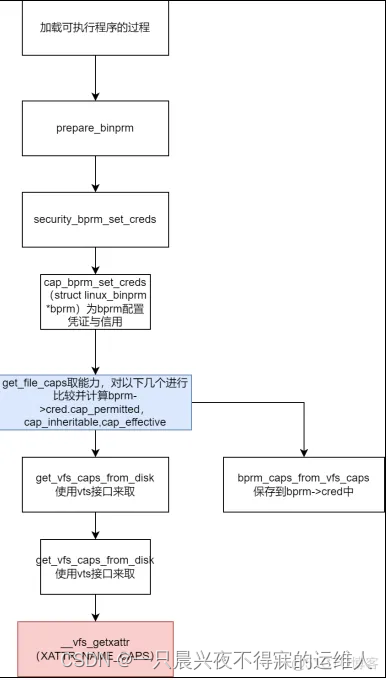
使用的过程
在进程启动后,他每通过一个系统调用时,都会使用cap_capable 来检查它的cred中的cap_effective是否有效。
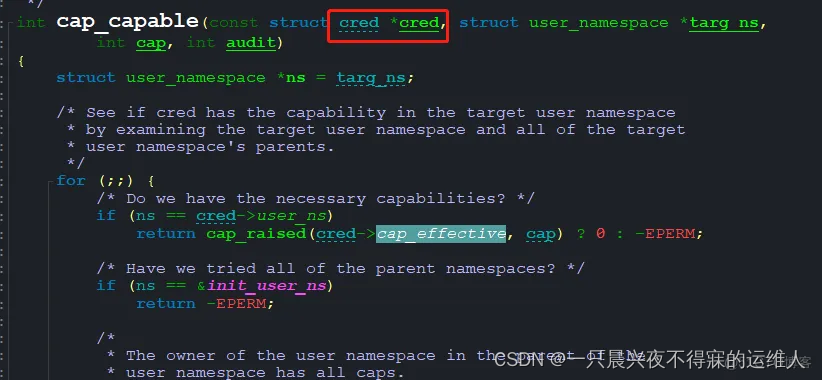
capability机制
查看当前bash的cap的命令 capsh
当前centos用户当前可使用的权限为0。

root用户的权限


capsh --inh=cap_net_admin --user=centos --
启动一个bash,以centos的用户名,此用户名的capability为cap_net_admin
进程的5种功能级别
- CapInh = Inherited capabilities //继承而来的
- CapPrm – Permitted capabilities //允许的,是CapEff的超级。使用setcap可以修改。
- CapEff = Effective capabilities //真实生效的
- CapBnd = Bounding set //系统可以支持的范围。
- CapAmb = Ambient capabilities set //环境中的。
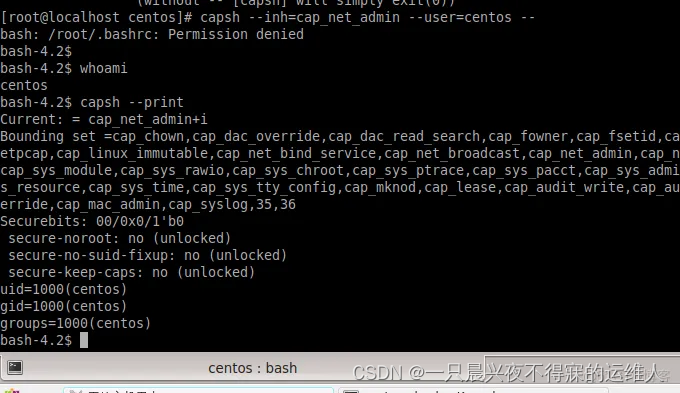

查看一个进程的Cap集合
cat /proc/81772/status | grep Cap
CapInh: 0000000000001000
CapPrm: 0000000000000000
CapEff: 0000000000000000
CapBnd: 0000001fffffffff
CapAmb: 0000000000000000
Rock80中/etc/secuirty/*.conf 与pam_cap.so
在su netadmin等命令时,会读到此文件,并且cap_set给bash进程。这样netadmin启动的进程就有了相应的cap了。
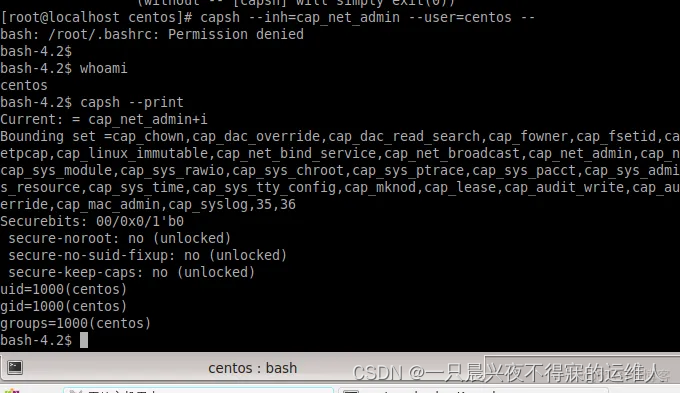
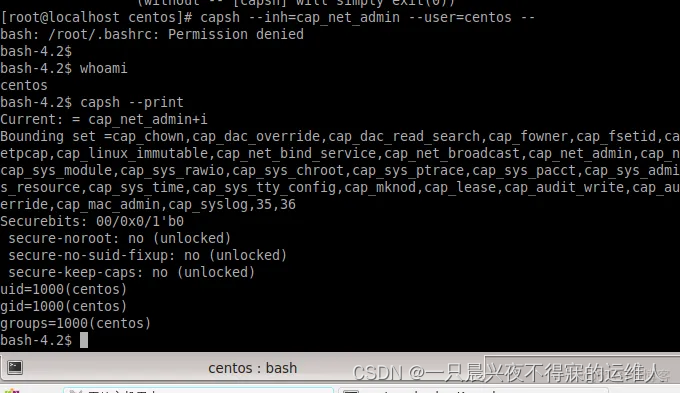
pam组件在认证过程中用pam_cap.so
附件
?How to Configure Linux Capabilities Per User - ITCodar
?Linux capabilities 101 - Linux Audit (linux-audit.com)
?capabilities(7) - Linux manual page (man7.org) 对capabilities的全面说明
本文来自互联网用户投稿,该文观点仅代表作者本人,不代表本站立场。本站仅提供信息存储空间服务,不拥有所有权,不承担相关法律责任。 如若内容造成侵权/违法违规/事实不符,请联系我的编程经验分享网邮箱:veading@qq.com进行投诉反馈,一经查实,立即删除!